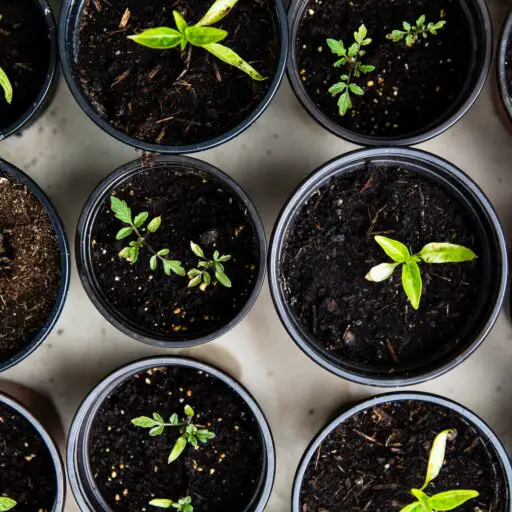Support our educational content for free when you purchase through links on our site. Learn more

Have you ever wondered what it really costs to dig into the vibrant world of community gardening? 🤔 As we step into 2024, the buzz around community gardens is louder than ever, with people eager to cultivate not just plants, but also friendships and a sense of belonging. But before you grab your trowel and head to the nearest plot, it’s crucial to understand the ins and outs of community garden membership fees.
Picture this: You’re standing in a lush garden, surrounded by fellow green thumbs, sharing tips on how to grow the juiciest tomatoes or the most fragrant herbs. But wait—what about the fees? Are they worth it? In this article, we’ll explore everything you need to know about community garden membership fees, including what they cover, how to find the right garden for you, and the incredible benefits that come with joining. Plus, we’ll share inspiring success stories from fellow gardeners that might just motivate you to dig in! 🌼
Key Takeaways
- Membership fees vary widely: Understand that fees can range from minimal to substantial, depending on the garden’s amenities and location.
- Fees support the community: Your membership helps maintain the garden, providing tools, water, and educational workshops.
- Engagement is key: Joining a community garden isn’t just about the plot; it’s about connecting with others and learning new skills.
- Discounts may be available: Many gardens offer reduced fees for students, seniors, or low-income individuals—don’t hesitate to ask!
- Success stories abound: Real-life experiences from community gardeners show the transformative power of these green spaces.
Ready to dig deeper? Check out our recommendations for essential gardening tools and resources to kickstart your community gardening journey! 🌿 Shop Gardening Tools | Explore Gardening Books
Table of Contents
- Quick Tips and Facts About Community Garden Membership Fees
- The Importance of Community Gardens: Why Membership Matters
- Understanding Community Garden Membership Fees: What You Need to Know
- How to Find the Right Community Garden for You
- Membership Fee Structures: What to Expect
- Benefits of Joining a Community Garden: More Than Just a Plot
- How to Get a Plot: Step-by-Step Guide to Membership
- STAY UP TO DATE. BECOME A MEMBER!
- Community Garden Success Stories: Inspiring Tales from Members
- Tips for Engaging with Your Community Garden
- Conclusion
- Recommended Links
- FAQ
- Reference Links
Quick Tips and Facts About Community Garden Membership Fees 🌱
Before we dive into the details, here are some quick tips and facts about community garden membership fees:
- Membership fees vary: Fees can range from a few dollars to hundreds of dollars per year, depending on the garden and its amenities.
- Fees often include: Access to garden plots, tools, and resources, as well as opportunities to participate in workshops and events.
- Some gardens offer discounts: For students, seniors, or low-income individuals, so be sure to ask about any available discounts.
- Fees can be negotiable: If you’re unable to pay the full fee, some gardens may be willing to work with you to find a solution.
- Membership fees support the garden: Fees help cover the costs of maintaining the garden, including water, tools, and other expenses.
What Do Membership Fees Typically Cover?
Membership fees for community gardens can vary widely, but here are some common expenses that fees may cover:
| Expense | Description |
|---|---|
| Plot rental | Access to a garden plot for the growing season |
| Tool usage | Use of shared tools and equipment |
| Water and utilities | Access to water and other utilities for irrigation and maintenance |
| Workshops and events | Participation in educational workshops and social events |
| Garden maintenance | Maintenance of common areas, including paths, fences, and other infrastructure |
The Importance of Community Gardens: Why Membership Matters 🌿
Community gardens are more than just a place to grow your own food – they’re also a community hub where people can come together to learn, share, and connect with others. By joining a community garden, you’re not only gaining access to a plot of land, but also becoming part of a vibrant community of gardeners.
Benefits of Community Garden Membership
- Meet new people: Community gardens are a great way to meet new people who share your interests.
- Learn new skills: Many gardens offer workshops and educational programs to help you improve your gardening skills.
- Get involved in your community: Community gardens often participate in local events and initiatives, providing opportunities to get involved in your community.
- Improve your mental and physical health: Gardening has been shown to have numerous physical and mental health benefits, including reduced stress and improved mood.
Understanding Community Garden Membership Fees: What You Need to Know 💸
When considering joining a community garden, it’s essential to understand the membership fees and what they cover. Here are some key things to keep in mind:
- Fees vary: Membership fees can vary widely depending on the garden and its amenities.
- Fees are often negotiable: If you’re unable to pay the full fee, some gardens may be willing to work with you to find a solution.
- Fees support the garden: Membership fees help cover the costs of maintaining the garden, including water, tools, and other expenses.
How to Find the Right Community Garden for You
With so many community gardens to choose from, it can be overwhelming to find the right one for you. Here are some tips to help you get started:
- Research local gardens: Look for gardens in your area and research their membership fees, amenities, and community.
- Visit the garden: Many gardens offer tours or open houses, providing an opportunity to meet the community and see the garden in person.
- Ask questions: Don’t be afraid to ask questions about the garden, including membership fees, plot sizes, and community events.
Membership Fee Structures: What to Expect 📊
Membership fee structures can vary widely depending on the garden and its amenities. Here are some common fee structures to expect:
- Annual fees: Many gardens charge an annual fee, which can range from a few dollars to hundreds of dollars.
- Monthly fees: Some gardens charge a monthly fee, which can be a good option for those who want to try out the garden without committing to a full year.
- Plot rental fees: Some gardens charge a fee for plot rental, which can vary depending on the size of the plot and the amenities included.
Benefits of Joining a Community Garden
- Access to a garden plot: Joining a community garden provides access to a plot of land where you can grow your own fruits, vegetables, and flowers.
- Use of shared tools and equipment: Many gardens offer shared tools and equipment, reducing the need for individual gardeners to purchase their own.
- Opportunities to learn and share: Community gardens often offer workshops and educational programs, providing opportunities to learn new skills and share knowledge with others.
Benefits of Joining a Community Garden: More Than Just a Plot 🌼
Joining a community garden is about more than just gaining access to a plot of land – it’s also about becoming part of a vibrant community of gardeners. Here are some benefits of joining a community garden:
- Meet new people: Community gardens are a great way to meet new people who share your interests.
- Learn new skills: Many gardens offer workshops and educational programs to help you improve your gardening skills.
- Get involved in your community: Community gardens often participate in local events and initiatives, providing opportunities to get involved in your community.
- Improve your mental and physical health: Gardening has been shown to have numerous physical and mental health benefits, including reduced stress and improved mood.
How to Get a Plot: Step-by-Step Guide to Membership 📝
Getting a plot in a community garden can be a straightforward process, but it’s essential to follow the steps carefully to ensure a smooth experience. Here’s a step-by-step guide to membership:
- Research local gardens: Look for gardens in your area and research their membership fees, amenities, and community.
- Visit the garden: Many gardens offer tours or open houses, providing an opportunity to meet the community and see the garden in person.
- Apply for membership: Once you’ve found a garden you’re interested in, apply for membership by filling out an application form and paying the required fee.
- Attend an orientation: Many gardens require new members to attend an orientation session, which provides an opportunity to meet the community and learn about the garden’s rules and regulations.
STAY UP TO DATE. BECOME A MEMBER! 📣
By joining a community garden, you’re not only gaining access to a plot of land, but also becoming part of a vibrant community of gardeners. Stay up to date with the latest news and events by becoming a member today!
Community Garden Success Stories: Inspiring Tales from Members 🌟
Community gardens are more than just a place to grow your own food – they’re also a community hub where people can come together to learn, share, and connect with others. Here are some inspiring tales from community garden members:
- Meet Jane: Jane joined her local community garden after moving to a new city. She was looking for a way to meet new people and get involved in her community. Through the garden, she met a group of like-minded individuals who shared her passion for gardening.
- Meet John: John had always been interested in gardening, but never had the space to do so. When he joined his local community garden, he was able to rent a plot and start growing his own fruits and vegetables. He was amazed at how much he was able to produce and how much he enjoyed the process.
Tips for Engaging with Your Community Garden 🌱
Community gardens are a great way to meet new people and get involved in your community. Here are some tips for engaging with your community garden:
- Attend events: Many gardens offer events and workshops, providing opportunities to meet new people and learn new skills.
- Volunteer: Volunteering is a great way to get involved in your community garden and meet new people.
- Join a committee: Many gardens have committees that focus on specific areas, such as education or outreach. Joining a committee is a great way to get involved and make a difference.
Conclusion 🌼

In summary, community garden membership fees can vary significantly based on location, amenities, and the specific garden’s needs. By understanding these fees and the benefits they provide, you can make an informed decision about whether to join a community garden.
Positives of joining a community garden include access to a dedicated plot for growing your own food, opportunities to learn new gardening skills, and the chance to connect with fellow gardening enthusiasts. Additionally, community gardens often foster a sense of belonging and community spirit, making them a valuable asset to any neighborhood.
Negatives may include the initial membership fee, which can be a barrier for some, and the requirement to adhere to garden rules and regulations. However, many gardens are flexible and willing to work with individuals to ensure everyone can participate.
Overall, we confidently recommend joining a community garden if you’re looking to cultivate not only plants but also friendships and community ties. 🌱
Recommended Links 🛒
-
Gardening Tools:
-
Books on Community Gardening:
FAQ ❓
Who benefits from a community garden? 🌍
Community gardens benefit a wide range of individuals and groups, including:
- Local residents: They gain access to fresh produce, green space, and a sense of community.
- Children and schools: Educational programs can teach kids about gardening, nutrition, and environmental stewardship.
- Local businesses: Community gardens can enhance neighborhood aesthetics and attract visitors, benefiting local shops and services.
Who owns community gardens in NYC? 🏙️
In New York City, community gardens can be owned by various entities, including:
- City agencies: Many gardens are managed by the NYC Department of Parks and Recreation through programs like GreenThumb.
- Land trusts: Organizations like the New York Restoration Project (NYRP) and the Trust for Public Land (TPL) own and manage several community gardens.
- Community groups: Some gardens are owned and operated by local community organizations or neighborhood associations.
How do you get people to join a garden club? 🌱
To attract new members to a garden club, consider the following strategies:
- Promote events: Use social media, local newspapers, and community boards to advertise club events.
- Engage with the community: Host open houses or workshops to introduce potential members to the club.
- Offer incentives: Consider offering discounts or free trials for new members to encourage them to join.
How do you create a community garden? 🌿
Creating a community garden involves several steps:
- Gather a group: Form a committee of interested individuals to help plan and manage the garden.
- Find a suitable location: Look for vacant lots, parks, or other available land that can be transformed into a garden.
- Obtain permissions: Work with local authorities to secure the necessary permissions and permits to use the land.
- Plan the garden layout: Decide on plot sizes, pathways, and communal areas for shared tools and gatherings.
- Raise funds: Seek donations, grants, or membership fees to cover initial costs like soil, seeds, and tools.
- Start planting: Organize a planting day and encourage members to contribute their skills and knowledge.
Reference Links 🔗
- Community Gardens in New York City – Wikipedia
- Riverside Avondale Community Garden
- Federated Garden Clubs of Nebraska – How to Obtain and Retain Members
- Benefits of Community Gardens – Community Gardening™
- Community Garden Policies – Community Gardening™
By engaging with your local community garden, you can reap the benefits of gardening while fostering connections with your neighbors. Happy gardening! 🌻

